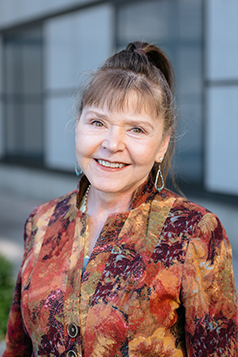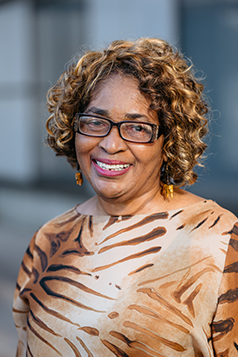 In the 1950s, it was very different living with Type 1 diabetes (T1D) than it is today.
In the 1950s, it was very different living with Type 1 diabetes (T1D) than it is today.
For example, to be diagnosed with T1D more than 60 years ago meant one’s anticipated life expectancy was much shorter than it is now. Traveling or spending the night away from home due to a potential insulin reaction was difficult at best. And balancing insulin levels was painful and all-consuming.
T1D, also known to many as juvenile diabetes, is an autoimmune disease in which the pancreas produces little to no insulin. Insulin is a hormone that controls blood-sugar levels, and a lack of insulin can be life-changing and -threatening.
In 2019, there is still no cure for the disease. However, strides in disease management, insulin technology and public knowledge have helped dramatically change the way diabetes can be treated. The growth in key research has helped patients like Deborah Nummy and Yvonne Dennis — two women with diabetes who are celebrating 60 and 65 years, respectively, of living with T1D — reach pivotal milestones in their health.
“Diabetes has been thoroughly revolutionized in the past 60 years, especially in the past decade with the advent of the continuous glucose monitors, or CGMs, and integrated CGMs/insulin pumps,” said Amy Warriner, M.D., associate professor in the University of Alabama at Birmingham Division of Endocrinology, Diabetes and Metabolism and director of UAB’s Weight Loss Medicine clinic. “It is much easier to ‘live’ with T1D now than even five years ago, and there are many additional advances in technology on the horizon. Hopefully that will also be met with improved access to these treatment options for everyone with diabetes.”
 Deborah Nummy is celebrating 60 years of living with Type 1 diabetes.Deborah’s story
Deborah Nummy is celebrating 60 years of living with Type 1 diabetes.Deborah’s story
Diagnosed at 7 years old, Deborah Nummy was told that she would never live to be 21. She was giving herself insulin shots multiple times a day in elementary school and had to learn quickly how to manage her disease.
“I’ve been managing my diabetes for 60 years, and people back then didn’t understand diabetes as the general public does now — even my teachers and close friends,” Nummy recalled. “I was a young girl during formative years, giving myself multiple insulin shots a day while also trying to be a good student and make friends. My T1D interfered with my schooling often, as well as with trying to spend the night at friends’ homes and traveling. I couldn’t recognize when an insulin reaction may be coming on and was often hospitalized.”
Attributing her long and healthy life living with T1D to her faith, family and medical advances, Nummy’s treatment regimen has changed greatly in her 60 years of care.
“At one point, I was on three different types of insulin, as regular insulin at that time only worked for six hours at a time,” Nummy said. “Today, I’m on an insulin pump that releases a little bit of insulin in my blood stream every few minutes and keeps me in check.”
Throughout her adult life, Nummy’s care at UAB has been a mainstay in her ongoing management of her T1D. She credits her past and current doctors, including one of UAB’s early division leaders Buris Boshell, M.D., and Warriner today.
“I’m blessed that I have been able to get my care at UAB,” Nummy said. “I always think ‘What if I had been born 100 miles from UAB?’ I would have died.”
 Yvonne Dennis was diagnosed with Type 1 diabetes as an infant, and has been living with Type 1 diabetes for 65 years. Yvonne’s story
Yvonne Dennis was diagnosed with Type 1 diabetes as an infant, and has been living with Type 1 diabetes for 65 years. Yvonne’s story
For Yvonne Dennis, she has only ever known a life with T1D. As she was diagnosed with T1D as an infant, managing her care became a family act, with her mother teaching her siblings how to administer her insulin injections into an orange.
“I remember my siblings’ often having to help give me injections, and it really was all our family knew,” Dennis remembered. “I was in and out of diabetic comas as a child, coming in and out of the hospital. In the fifth grade, I was barely 50 pounds. The disease really took a toll on my body growing up.”
Like Nummy, Dennis had a hard time leaving home as a child due to the management of diabetes at the time. But she recalls a trip to New York City with her mother that gave her a slice of normalcy during an otherwise different childhood as a diabetic.
Now 65 years later, T1D is still a part of Dennis’ life. But as a 20-year patient at UAB, she’s seen a tremendous amount of advancement bring diabetes care to the place it is today.
“When I was first diagnosed, there was only one kind of insulin; but today, there are so many different kinds, and the ways in which I’ve been able to receive my insulin have changed over the years,” Dennis said. “I’ve realized as I’ve grown with the disease that, if you follow doctor’s orders and stick to your exercise and diet plan, you can and will be OK. It’s amazing how far diabetes care has come since I was a girl. It’s by the grace of God that I’ve brought me this far and I praise him.”
For more information about T1D and resources available at UAB, please visit uab.edu/medicine/endocrinology.